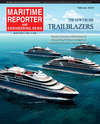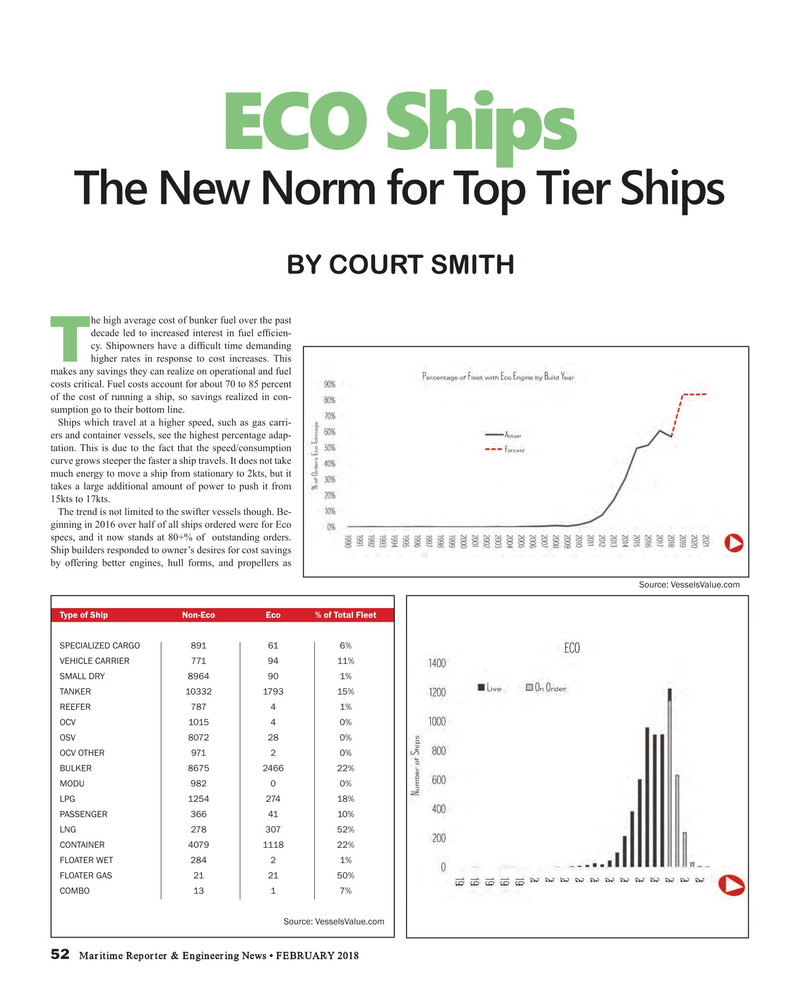
Page 52: of Maritime Reporter Magazine (February 2018)
Cruise Ship Annual
Read this page in Pdf, Flash or Html5 edition of February 2018 Maritime Reporter Magazine
ECO Ships
The New Norm for Top Tier Ships
BY COURT SMITH he high average cost of bunker fuel over the past decade led to increased interest in fuel ef? cien- cy. Shipowners have a dif? cult time demanding
Thigher rates in response to cost increases. This makes any savings they can realize on operational and fuel costs critical. Fuel costs account for about 70 to 85 percent of the cost of running a ship, so savings realized in con- sumption go to their bottom line.
Ships which travel at a higher speed, such as gas carri- ers and container vessels, see the highest percentage adap- tation. This is due to the fact that the speed/consumption curve grows steeper the faster a ship travels. It does not take much energy to move a ship from stationary to 2kts, but it takes a large additional amount of power to push it from 15kts to 17kts.
The trend is not limited to the swifter vessels though. Be- ginning in 2016 over half of all ships ordered were for Eco specs, and it now stands at 80+% of outstanding orders.
Ship builders responded to owner’s desires for cost savings by offering better engines, hull forms, and propellers as
Source: VesselsValue.com
Type of Ship Non-Eco Eco % of Total Fleet
SPECIALIZED CARGO 891 61 6%
VEHICLE CARRIER 771 94 11%
SMALL DRY 8964 90 1%
TANKER 10332 1793 15%
REEFER 787 4 1% 0% OCV 1015 4 0% OSV 8072 28
OCV OTHER 971 2 0%
BULKER 8675 2466 22%
MODU 982 0 0% 18% LPG 1254 274
PASSENGER 366 41 10% 52% LNG 278 307
CONTAINER 4079 1118 22%
FLOATER WET 284 2 1%
FLOATER GAS 21 21 50%
COMBO 13 1 7%
Source: VesselsValue.com 52 Maritime Reporter & Engineering News • FEBRUARY 2018
MR #2 (50-57).indd 52 MR #2 (50-57).indd 52 2/8/2018 10:21:27 AM2/8/2018 10:21:27 AM

 51
51

 53
53
